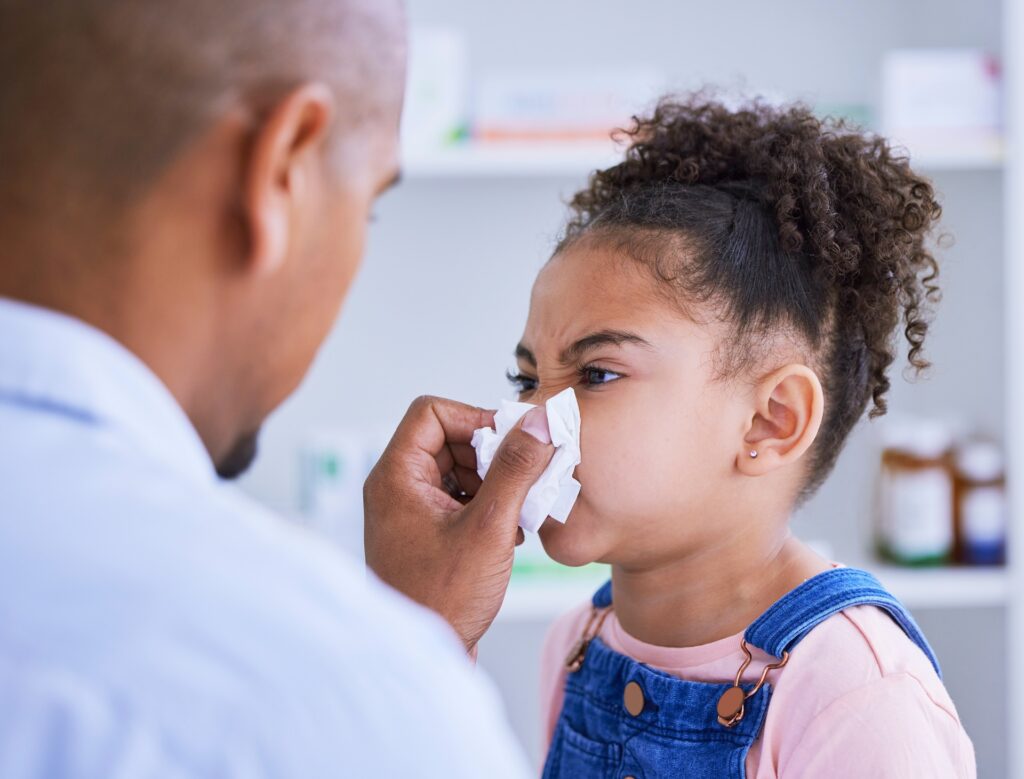As parents, keeping our children safe and healthy is our top priority. One challenge that many parents face is dealing with pediatric allergies, which can arise at any age. Allergies in children can be daunting, affecting their daily activities and overall wellbeing. This blog aims to demystify the world of pediatric allergies, providing clear and concise information that every parent should know.
Understanding allergies in children is crucial. By knowing what to look out for and how to respond, you can ensure that your child gets the right help quickly. We’ll guide you through the basic types and triggers of allergies, symptoms to watch for, how these conditions are diagnosed, and finally, how they can be managed effectively. Stick with us as we explore these essential aspects, simplifying complex medical jargon into easy-to-understand language that will empower you to better support and care for your child.
Understanding Pediatric Allergies: Types and Triggers
Allergies in children can seem quite overwhelming, but knowing the different types and what triggers them can make a world of difference. Basically, an allergy is when the immune system reacts to something harmless as if it were a threat. For kids, common allergens include certain foods, pollen, pet dander, and dust mites. Food allergies are particularly prevalent with items like nuts, eggs, and milk leading the list. Then you have environmental triggers, such as pollen during the springtime, which can cause seasonal allergic reactions.
Recognizing what triggers your child’s allergies is vital. Some children might have reactions in specific situations such as playing in a garden during pollen season or after eating a particular food. Being aware of these triggers helps us avoid them or prepare with appropriate treatments. Keeping a diary of your child’s reactions can be a helpful way for us to pinpoint specific allergens and manage the condition more effectively.
Symptoms of Common Childhood Allergies
The symptoms of allergies in children can vary widely but knowing what to look out for can help you act swiftly. Common signs include sneezing, itchy or runny nose, and itchy, watery eyes – these are often associated with respiratory allergens like pollen and pet dander. Skin reactions are also common, which might look like red, itchy rashes or hives. Food allergies can sometimes cause more severe symptoms, including swelling around the mouth, difficulty swallowing, or even anaphylactic reactions, which are emergencies needing immediate medical attention.
Parents should particularly watch out for any signs of distress in their children following the introduction of new foods or environments. Early detection of these symptoms and understanding their potential link to allergies can lead to faster management and relief for your child. It’s also important to communicate any observed symptoms with healthcare providers to ensure appropriate measures are taken.
Diagnosis and Testing for Allergies in Children
Determining whether a child has allergies might involve several kinds of tests, which we can help administer right here at Child Specialist in Vadodara. The most common tests are skin prick tests and blood tests. Skin prick tests involve placing a small amount of the suspected allergen on the child’s skin, typically the forearm or back, and then slightly pricking the skin so the substance goes beneath the surface. If a red, itchy bump develops, it’s likely the child is allergic to that substance.
Blood tests, on the other hand, measure the amount of allergy-specific antibodies in your child’s bloodstream, known as IgE antibodies. These tests are particularly useful for detecting allergies to pollen, dust mites, pet dander, certain foods, and molds. Both types of tests are quick and cause minimal discomfort, but they provide us with essential information about what’s troubling your child.
Managing and Treating Your Child’s Allergies
Once we’ve identified what your child is allergic to, the next step is managing and treating the allergies. Avoidance of known allergens is the most effective strategy, but we know it’s not always possible, especially with allergens like pollen and dust. Therefore, we also focus on treatments that can alleviate symptoms. Medications such as antihistamines can be very effective in reducing symptoms of hay fever and other allergies. For more severe cases, such as those at risk of anaphylaxis from food allergies, we may recommend carrying an epinephrine auto-injector at all times.
In addition to medication, we might also suggest immunotherapy, which involves exposing the child to small amounts of the allergen in a controlled way to gradually build up tolerance. This treatment can be incredibly effective for certain types of allergies, including those to insects and pollen.
Empowering Your Allergy Management Journey
Navigating the world of pediatric allergies can be challenging, but at Child Specialist in Vadodara, we are dedicated to guiding and supporting every step of your journey. Our tailored approach ensures that each child receives personalised care suited to their specific allergic conditions. By staying informed and aware, you as a parent can make a significant difference in managing your child’s allergies effectively.
If you have concerns about your child’s allergies, don’t hesitate to get in touch with us for expert advice and support. Let our pediatric clinic help you ensure your child leads a happy, healthy, and active life, free from the constraints of unmanaged allergies. Remember, managing allergies is a team effort, and at Child Specialist in Vadodar, we are ready to be part of your team!

